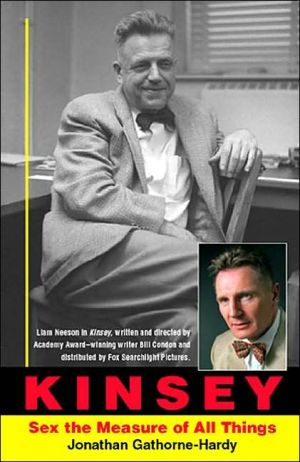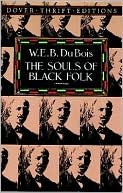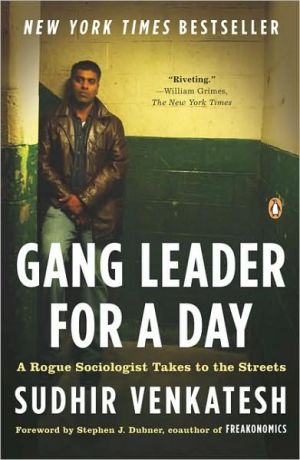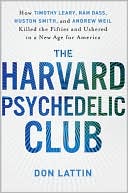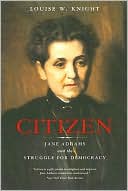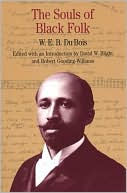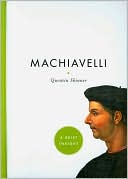Sex the Measure of All Things: A Life of Alfred C. Kinsey
Sex the Measure of All Things A Life of Alfred C. Kinsey Jonathan Gathorne-Hardy\ A balanced, moving, humane portrait of one of this century’s great researchers and social reformers.\ "America produced Alfred Kinsey, but he’s big enough to go around." —Elaine Showalter, Times Literary Supplement\ "A deeply humane book...This biography’s vivid portrait of a genius possessed is so compelling that you end up caring more about the man than the science. Kinsey is one of the most fascinating and...
Search in google:
Sex the Measure of All ThingsA Life of Alfred C. KinseyJonathan Gathorne-HardyA balanced, moving, humane portrait of one of this century's great researchers and social reformers."America produced Alfred Kinsey, but he's big enough to go around." — Elaine Showalter, Times Literary Supplement"A deeply humane book...This biography's vivid portrait of a genius possessed is so compelling that you end up caring more about the man than the science. Kinsey is one of the most fascinating and influential figures of the century, a flawed visionary whose brave and amusing experiences are a testament to the rich complexity of human sexuality...With grace and wit Gathorne-Hardy has given us the full measure of the man." — Michael Shelden, Daily Telegraph"At exactly the right moment, Jonathan Gathorne-Hardy has produced a serious study of Kinsey, of the man and the work...This is the book we needed to cap Kinsey's work of liberation at this century's end. — Gore VidalFor Gathorne-Hardy, Kinsey is primarily an artist, a collector, a novelist, a mythologist. He is a pioneer of modernism, along with Lawrence, Henry Miller and Picasso, and a philosopher of sexuality, along with Foucault. These may sound like strange bedfellows for the son of a strict Methodist family, growing up in small-town America. But in making Kinsey part of a global twentieth-century culture, Gathorne-Hardy opens the way for other scholars and critics to read the life and the work from a variety of intellectual and national perspectives.Alfred Kinsey was this century's first scientifically reputable and most influential researcher into sex. His Sexual Behavior in the Human Male (The Kinsey Report), published in 1948, was an explosive bestseller, followed in 1953 by his even more radical statistics on female sexuality — both based on over 18,000 case histories. But Kinsey's exploration went much further than that. Bisexual, he experimented with many of the behaviors he was hearing about; and his wife and close colleagues experimented too. He pioneered observation and filming of sexual activity, the findings anticipated, and confirmed by, Masters and Johnson thirty years later. The revolutionary nature of his views on female sexuality could not become current until the feminism of the 1970s and 80s. There have been suggestions that his bisexuality and his courageous personal exploration biased his research. In fact, the reverse is true — they partly explain why it was so successful and, in a field where only approximations are possible, more accurate than any since. Except where the culture has changed (with pre-marital sex, for example), all his major findings — including his figures on homosexuality — still stand up. As a result, his data (only 10% went into his two vast books) is still being actively mined today.This fascinating biography describes Kinsey's strict Methodist upbringing, his love of minute observation which he applied first to academic entomology and then to human sexuality, and the obsessive work ethic that contributed to his death. Kinsey is perhaps even more controversial today than he was when his work was first published. Other researchers and religious groups have attacked his work from different perspectives. The man himself has frequently been lost in all of the claims and counterclaims, attacks and defenses, as well as the efforts to make him conform to predetermined theories about his personality and behavior. Gathorne-Hardy's literate, humane work is the first major biography to give a balanced portrait of one of this century's pioneering researchers and social reformers. He has interviewed in depth surviving family members, close colleagues, friends, lovers. He reveals, in this subtle, often witty, penetrating study, not just a series of new revelations, but whole new aspects of this complex, difficult, contradictory, heroic, obsessive, and ultimately sympathetic man.Jonathan Gathorne-Hardy is the author of The Rise and Fall of the British Nanny and The Public School Phenomenon. He has also written a biography of Gerald Brenan, The Interior Castle. Publishers Weekly It seems fitting that the man who started the culture wars over sexuality with the 1948 publication of Sexual Behavior in the Human Male should now be the subject of them. Kinsey's life and career have always been controversial, but the 1997 publication of James H. Jones's Alfred C. Kinsey: A Public/Private Life intensified the debate and attracted significant media attention by using sensational language to make the claim that the sex researcher was a deeply tormented homosexual masochist whose "inner demons" caused him to distort and falsify his research. While Gathorne-Hardy's new biography by necessity covers much of the same ground, and gives its predecessor fair credit, it also presents itself as a corrective to what its author sees as Jones's deeply ingrained prejudice against his subject and a "strong distaste for homosexuals and homosexuality" as well as nontraditional sexual practices. Methodical and cautious, Gathorne-Hardy lacks Jones's more gripping narrative drive, but he reveals much new important material--such as Kinsey's incredibly productive professional and personal relationship with novelist Glenway Westcott--that illuminates the man and his work. Gathorne-Hardy's study functions best, and most importantly, as a sharp and insightful critique of what he sees as Jones's biases. Tracking what he says are Jones's use of innuendo and pejorative language, his internal contradictions and seemingly purposeful misreadings of interviews, the author not only builds a solid case against the earlier work's conclusions but places them in an increasingly anti-sexual modern cultural context that is reminiscent of the society Kinsey himself fought against 50 years ago. (Mar.) Copyright 2000 Cahners Business Information.\|
\ \ \ \ \ Chapter One\ Childhood in Hoboken: 1894-1903\ \ \ 1\ \ \ When his children were small, Alfred Charles Kinsey used to fascinate them with descriptions of the Broadway he could remember in the New York of his childhood — a broad, unpaved muddy trackway down which cows were driven.\ He was born in Hoboken, New Jersey, on 23 June 1894. He had no interests in his antecedents and virtually nothing is known of them. After Sexual Behavior in the Human Male came out in 1948, Kinseys from all over America wrote and asked if by chance they were related. Kinsey wrote back briefly and identically to each: it was thought they were all descended from three Quaker Kinseys who had come over with William Penn in 1682 and helped found the city of Philadelphia. One branch eventually moved, coincidentally, to the Midwest state of Indiana. Kinsey's own ancestors lived `for generations' near Morristown, New Jersey.\ It seems possible Kinsey's ancestors' brothers were either Irish or Scottish in origin (the Penns had estates near Cork and William went there in 1666). The speculation is suggested by a curious circumstance of Kinsey's later life — which may also be why he himself vaguely hinted at such a descent. He was, at the height of his fame, to address very large gatherings about his sex research — several times of a thousand or more and once of over nine thousand; and on numerous occasions he had to face aggressive professional groups violently hostile to his work. It was noticed that at these times, when he was nervous,a distinct Scottish burr would enter his voice, vanishing as he gained confidence. One must suppose that as their accent transformed some, or one, of the Kinseys reverted to it under stress and that this mannerism passed on down the generations.\ There are a few other scattered facts (for instance one early Kinsey was a supreme court judge in New Jersey) but nothing important. One reason for this paucity is that Kinsey disliked his past and his childhood, and disliked talking about his childhood even more; none the less it is here that a number of significant and sometimes peculiar details do remain.\ \ \ 2\ \ \ His father, Alfred Seguine Kinsey, was born in Mendham, just before the family moved to Hoboken, in 1871. In 1886, when he was fifteen, his own father, a carpenter, placed him as a lowly shop assistant in the Stevens Institute of Technology. It seems probable that he had in fact left school to find work aged thirteen, since he only ever reached 8th grade.\ Alfred senior remained here his entire working life of fifty-five years, grimly grinding his way up until eventually in 1908 he became a full professor. In his early years he worked long evenings and all his holidays in the Cooper Union School to gain extra qualifications.\ By 19 February 1892, when he was twenty-one, he could just afford to marry. He chose a New Jersey girl, Sarah Ann Charles, the daughter of another carpenter. Almost nothing seems to be known about the Charles family, except that Sarah's father was exceptionally able at his trade. As a young man (in the 1850s) he was employed because of his skill on the Mormon Temple in Utah, even though not himself a Mormon. When he returned to New Jersey he was escorted part of the way by armed soldiers, since they passed through Indian territory.\ Sarah herself was virtually uneducated (fourth grade) and, according to her son's wife Clara, was a gentle woman of great sweetness but totally dominated by her iron-hard, stubborn and dictatorial husband. This young man felt that at twenty-one he could afford to rent a house in Bloomfield Street, number 611, within easy walking distance of the Stevens Institute. It was one of several poor, cramped, cold-water tenements the family lived in and it was here their eldest son was born.\ Bloomfield Street today is in most respects exactly the same as it was when Al, as the family called him, was born. It is still respectable working and lower middle class, still long, tree-lined with pleasant, two- or three-storeyed, terraced, redbrick houses (many cramming in two or three families). Parallel to it runs Garden Street and at number 301 (number 3 in Kinsey's day, not 2 as he remembered) there still stands the school that took him to his third grade. Now it incorporates a Head Start unit. And on Garden and Fourth Street is the playground he remembered, which, too, must be much the same — a big space with big, old trees, swings, an asphalt square for games, mangy grass.\ Much has changed. Hoboken itself is on the east bank of the Hudson, directly across from and less than three-quarters of a mile from New York. The famous Manhattan skyline, gigantic buildings like the massive bar charts and spiked graphs of the economic dynamism that gave rise to them, extends before you. In 1894 it didn't exist. The tallest building in 1889 was the eleven-storey Tower Building. Skyscrapers proper didn't start to appear till the early 1900s with buildings like Singer Sewing Machine (612 ft in 1908) and Metropolitan Life (693 ft also 1908).\ But in the 1890s nearly 60,000 people were packed into Hoboken's single square mile in conditions of Victorian squalor. From the north, smoke belched from metal, chemical and leather factories, blowing along the dirty streets. River Street, five above the Kinseys, was lined with dance halls, bars and prostitutes.\ The roads of Hoboken, as in most of America, were still not paved when Kinsey was born; the traffic was nearly all horse-drawn. He said he could remember the first cars and how they always broke down after a block or two. It is just possible. In 1899 there were six hundred internal combustion-driven cars in the whole of America. Perhaps one or two found their unreliable way down the pot-holed streets of Hoboken.\ Again, like a lot of America then, it seems likely that those same streets, indeed Hoboken generally, had poor drainage and sanitation. Kinsey's first ten years were dominated by disease. Not just measles and chicken pox and the other ills of childhood which, a delicate child, he had in abundance, but diseases now largely confined to Third World countries — rickets and rheumatic fever. Rickets is a disease of bad diet (Vitamin D deficiency) and children with it are weak, restless and pale. It left Kinsey with double curvature of the spine. Rheumatic fever most often occurs where housing and sanitation are inadequate. It is a debilitating and painful disease; days, even weeks, have to be spent in bed, sweating with high fevers and racing pulse, unable to eat, joints aching, exhausted. It takes weeks to recover.\ As a result, for much of his time in Hoboken, Kinsey was away from school, either in bed or convalescing. Sickly and weaker than his peers, kept by illness from their friendship groups, he was a typical target for bullying- and Kinsey was bullied. Years later he described to his assistant, Wardell Pomeroy, how he had once managed to escape his tormentors. Besieged in the street, he had suddenly thrown out a handful of pennies. The boys had dived — and Kinsey had fled.\ Such situations must have recurred. It is clear the little boy's need to escape was desperate. Just how desperate is indicated by that handful of pennies, for the Kinseys were at this time still very poor.\ Poverty was the second factor which dominated young Alfred's early life. His father doled out a minute allowance by the week, and it was inadequate. His mother Sarah would get into debt and send Al to the local store with an instalment asking him to beg for more credit. She also used a store on the far side of town which issued an early version of trading stamps — and she made her son do the shopping there too. He hated these trips through muddy streets, no doubt frightened of bullying groups. But he also found begging for credit intensely humiliating.\ The pressures of poverty grew worse when his sister Mildred was born in 1896 and these no doubt account for the deficiencies in diet. Pomeroy describes him as an adult still expressing a `furious hatred' against the potato. And Kinsey never forgot the poverty of his childhood. He remained extremely frugal, not to say parsimonious, all his life — wearing darned clothes, buying cheap whenever he could, expressing `furious hatred' at any sign that he or anyone connected to him was being exploited. For the rest of his life he never went into debt. He never allowed his wife Clara to run up accounts in Bloomington or possess charge cards. When, eventually, the exigencies of his great sex research programme required him to beg again he proved virtually incapable of doing it. And both Mildred and his mother suffered from obesity — that affliction, ironically, so common among the poor.\ Yet perhaps the little family gained some consolation for their poverty from the teachings of Christ- blessed are the poor, for they shall inherit the Kingdom of Heaven. The third major strand in Kinsey's childhood was religion.\ \ \ 3\ \ \ The Kinseys belonged to a group of Methodists so strict they could, doctrine apart, have been described as Calvinists. And of all that little group of Hoboken Methodists, Alfred Seguine Kinsey was the sternest, the strictest, the most unforgiving. Sundays were particularly cheerless. They went to three long services (walking — riding was forbidden), and also to Sunday school, where the father taught. Nothing else was allowed, no entertainment, no relaxation, nothing pleasurable at all — the milkman was forbidden to deliver milk, newspapers were forbidden, Sarah Kinsey had to cook all Sunday's meals on Saturday. The only thing they could do was pray.\ The effects of Kinsey's religious upbringing were fundamental to his character and affected his whole life. The working through of this immense force took place over time, but some aspects must have been impressed very early on. John Wesley's revival in the eighteenth century was of a passionately personal religion — austere, simple, personal testimony in private and public. One might note here certain strands: the vital importance of learning and education (Wesley himself started a school); fervent and frequent condemnations of smoking and drinking; speech — to be blunt and straightforward; politics — to be avoided. And, in general terms, Methodism shared that element common to all Protestantism, particularly perhaps as it expressed itself in America: unremitting work led to success and success was proof positive of God's favour. All these particular prohibitions and spurs were to find expression in the life of the mature Kinsey.\ They were impressed on the young one by stern disciplines. Aside from the strictures inherent in a Methodist upbringing (Wesley's own school, Kingswood, was absolutely appalling), it is often possible to deduce from the way someone brings up their children aspects of their own upbringing, which they either replicate or react against. Kinsey brought up his own children much more strictly than his Bloomington neighbours, chastising them as he felt their behaviour required and insisting on strict rules.\ In passing, we should note another, odder, legacy. Alfred Seguine was strict — he was also extraordinarily egotistical. His students, who universally loathed him, used to count the number of times `I' appeared in his one-hour lectures. A normal figure was a hundred times. In later years Kinsey was virtually unable to use the word `I', and as a result got into fearful tangles of `we' and `one'.\ We can almost certainly assume two other things about little Al's early upbringing from the mature Kinsey's behaviour. Certainly the almost insane emphasis he was later to lay, and impose, on personal cleanliness suggested its imposition early and with a heavy hand. The same was true of his obsession with neatness. Clearly, cleanliness — and tidiness — were next to Godliness.\ But father Kinsey was not just concerned with the moral rectitude of his own family. He tried, with commendable zeal, to reform the entire neighbourhood. Selling cigarettes to a minor in New Jersey was (and still is) illegal. Alfred Seguine used to send his young son out as a decoy. Once the cigarettes were sold, he would inform the authorities and the law fell on the astonished shopkeeper.\ This sort of behaviour cannot have made the Kinseys very popular in Hoboken. It was a further cause of bullying. It also partly explains another significant feature of their family life.\ \ \ 4\ \ \ The Kinseys had very few friends. They did not mix with the faculty of the Stevens Institute because Sarah Kinsey was shy and ill at ease with them. Their social life, such as it was, and apart from one or two relatives, was restricted to a few of the Hoboken Methodists — gloomy gatherings, exchanging platitudinous pieties, the children enjoined to respectful silence. Dorothy Collins, one of the most perceptive and intelligent of the staff he had gathered round him by 1951, noticed at once Kinsey's social unease. `I sensed it came from never having learnt it when small. Never having learnt to talk easily and informally. Then when they grow up — they can't learn it. It happens more frequently with scholars perhaps.'\ Many people were to comment on this. The effects of years of isolation through illness, with few if any close friends, the feeble role models of ordinary social life, all to be reinforced, combined to make this — the small talk of society — an area which Kinsey refused, often with considerable impatience, to enter. All his mature friendships were work-centred, and only one involved him with any deep emotion. For that, he invested entirely in his wife and children.\ To say Kinsey disliked his memories of his first ten years is an understatement. He hated them. Later a skilled and fanatical gardener, he rejected the flowers of Hoboken just as he had attacked the potato. He refused to plant — or even accept as a gift — marigolds, zinnias or wisteria.\ Yet, deprived of such essential psychic nutrients as companions or a social life, he was to turn with compensating eagerness and intensity to those things he could get pleasure from. One of these was music.\ Every so often the family would set off for Newark to visit relatives. `We had to cross the Hackensack and Passaic meadows on the Jersey plank road (in a day when it was actually made of planks)'; but for five-year-old Alfred by far the most exciting thing about these rather rare excursions was that his cousins possessed one of the new `talking machines'. This `marvellous invention' was still vivid to him in an article he wrote — `Music and Love as Arts' — just before he died:\ \ \ Uncle Josh spoke from the surfaces of the cylinders that revolved in the machine. He and most other cylinder notables of that day ended their performances by announcing that we had listened to `an Edison Rec-cord'. Even after all these years I can still hear the intonations and the exact rhythm of that phrase `an Edison Rec-cord'.\ \ \ The magic cylinders also played music and little Alfred's response to this was noticed. One of his young aunts, his father's sister, had a piano and it is possible he tried to play on this. In any event, from the age of five his parents provided piano lessons, or allowed his aunt to give them. Someone had recognised a nascent and, as it turned out, precocious musical talent.\ It is clear from this, and still more from events later, that his parents cared for their son and were determined to do what they could for him. The severity of his ill-health must have required from his mother years of devoted nursing — one of the most tangible expressions of love.\ Nor was her husband's contribution by any means totally negative. In youth and early manhood an over-strict paternal upbringing, especially for boys, can either crush character and independence or, as it did with Kinsey, provoke angry battles between father and son. But at first, firm lines of behaviour, invariable routine, dogmatic certainty, create security and confidence. In later life, the mosaic of that sensitive and complicated man was cemented on a base of complete, almost excessive, self-confidence — a base which it is reasonable to suggest began to be laid down through a combination of his mother's care and his father's extreme firmness.\ Then in 1903 he got another still more serious Third World disease, typhoid, a disease often due to poor water and sewage facilities. There was then no treatment except good nursing. The mortality rate was three out of ten; for young children, closer to six out of ten. It was, still is, an agonisingly painful disease, usually lasting about a month and necessitating lengthy convalescence.\ The young boy recovered. And an unexpected result was the total cessation of his attacks of rheumatic fever which had plagued his first nine years. It is probable that the very high temperatures generated by typhoid at its crisis — 104-106øF over several days — had killed the streptococcal bacterium of the lesser disease.\ This recovery coincided with an improvement in the family finances. In 1903 they moved some fifteen miles further down the rail-track, already in place by that year, to the village of South Orange. Kinsey was to remain here until 1914, when he was twenty years old and stormed out of his home forever.
Acknowledgments List of Illustrations Part I: Laying the Patterns: 1903-20 1 Childhood in Hoboken: 1894-1903 2 South Orange to Bowdoin College: 1903-14 3 College--and First Appearance of the Gall Wasp: 1914-20 Part II: Bloomington, Galls, Marriage--First Steps into Sex Research: 1920-39 4 The Married Professor 5 Sex Life 6 Gall Wasp Triumph 7 The Marriage Course 8 A Brief History of Sex Research Part III: Sex: The Male Volume 9 How to Get at the Truth 10 Money, Support, Attacks--The Shape of Things to Come: 1941-3 11 Kinsey at his Exercise: 1943-4 12 Racing for the Male Report: 1944-7 13 Writing the Male Volume--Science and Self-expression: 1947 14 Publication: Criticism, Praise, Success! Part IV: Sex: The Female Volume 15 Money--Branching Out--Kinsey's Sexual Experiments: 1948-9 16 Expansion--and Discovering the Female: 1949-50 17 Filming--"Philosophy"--Women--Writing--Wescott: 1950-1 18 Bisexuality--and the Case Against Kinsey 19 Writing and Publication of the Female Volume--Science as Sex and Literature 20 The Paper Explosion Part V: Decline and Fall 21 Money--and Deterioration: 1953-5 22 Europe: October-December 1955 23 Death 24 Conclusions Appendix A Appendix B Appendix C Brief Note on Sources References Published Works by Alfred C. Kinsey Bibliography Index
\ Publishers Weekly - Publisher's Weekly\ It seems fitting that the man who started the culture wars over sexuality with the 1948 publication of Sexual Behavior in the Human Male should now be the subject of them. Kinsey's life and career have always been controversial, but the 1997 publication of James H. Jones's Alfred C. Kinsey: A Public/Private Life intensified the debate and attracted significant media attention by using sensational language to make the claim that the sex researcher was a deeply tormented homosexual masochist whose "inner demons" caused him to distort and falsify his research. While Gathorne-Hardy's new biography by necessity covers much of the same ground, and gives its predecessor fair credit, it also presents itself as a corrective to what its author sees as Jones's deeply ingrained prejudice against his subject and a "strong distaste for homosexuals and homosexuality" as well as nontraditional sexual practices. Methodical and cautious, Gathorne-Hardy lacks Jones's more gripping narrative drive, but he reveals much new important material--such as Kinsey's incredibly productive professional and personal relationship with novelist Glenway Westcott--that illuminates the man and his work. Gathorne-Hardy's study functions best, and most importantly, as a sharp and insightful critique of what he sees as Jones's biases. Tracking what he says are Jones's use of innuendo and pejorative language, his internal contradictions and seemingly purposeful misreadings of interviews, the author not only builds a solid case against the earlier work's conclusions but places them in an increasingly anti-sexual modern cultural context that is reminiscent of the society Kinsey himself fought against 50 years ago. Mar. Copyright 2000 Cahners Business Information.\ \ \ \ \ Library JournalComparing the cultural and sociological impact of the pioneering sexual research conducted by Alfred C. Kinsey with the work of Darwin and Freud may be an exaggeration. Nonetheless, in his own lifetime the popular press compared Kinsey's reports to the atom bomb, and his having merited two biographies within three years is a tribute to a dedicated scientist who led a crusade against sexual hypocrisy and whose landmark studies assuredly affected the sexual mores of the 20th century. Both British writer Gathorne-Hardy (whose book was first published in Britain under a different title) and James Jones (Alfred C. Kinsey, LJ 10/15/97) spent more than two decades digging in the archives of the Kinsey Institute, and both books show a dogged commitment to detail. Gathorne-Hardy insists that his is a kinder, gentler interpretation (he criticizes some of Jones's conclusions), but both authors reveal a voyeur's fascination with Kinsey's sex research as well as with his own homosexuality. Serious collections of human sexuality should have both titles.--James Swanton, Harlem Hosp. Lib., New York Copyright 2000 Cahners Business Information.\\\ \ \ Clark Maines. . . unabashedly admiring, a sympathetic, insightful and highly readable story. . . . shows us a very human and fallible but ultimately likable Kinsey, impatient and irritable at times, stubborn, willful, certainly a monomaniac about his research interests . . .\ —The New York Times Book Review\ \
